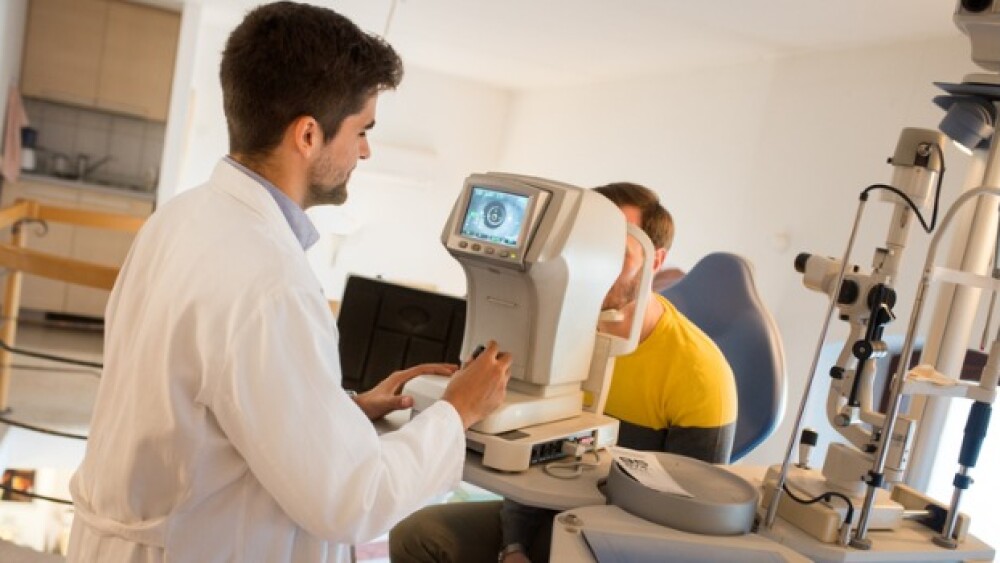Ahead of an FDA decision in the third quarter, Regeneron is touting promising durability data from the Phase III PULSAR trial for higher-dose Eylea in patients with wet age-related macular degeneration.
Pictured: Doctor conducts an eye exam on a man/iStock, DanijelaKuzmanov
Topline, two-year data from the pivotal PULSAR trial showed that at an 8-mg dose of Regeneron’s Eylea (aflibercept) can be administered at longer intervals without sacrificing vision gains in patients with wet age-related macular degeneration, the company announced Thursday.
The results come as Regeneron awaits the FDA’s verdict on its Biologics License Application (BLA) seeking approval for the higher dose level of its blockbuster eye injection. Eylea is approved for the treatment of various eye diseases, including wet age-related macular degeneration (wAMD) and diabetic retinopathy, but its current label only allows 2-mg doses.
The FDA in June rejected the BLA, citing manufacturing issues, but in its second-quarter earnings report last week Regeneron announced it had spoken with the third-party contract manufacturer and expects to submit additional information to the regulator within the month. Regeneron anticipates a decision within the third quarter.
In PULSAR, a double-masked trial with 1,009 patients enrolled, Eylea was given at its investigational 8-mg dose at 12-week or 16-week intervals. As an active control, the study used the drug’s approved 8-week dosing regimen. All patients were also given the three initial monthly doses per Eylea’s label.
Throughout the trial, patients were allowed to shorten or extend their dosing intervals if they met pre-specified criteria. However, through 96 weeks of follow-up, PULSAR found that 88% of patients who received their Eylea doses at least 12 weeks apart were able to maintain this treatment regimen. Meanwhile, 70% of those who were dosed at least 16 weeks apart were able to stay on this schedule through two years of follow-up.
In addition, 71% of PULSAR patients qualified for even longer treatment intervals, with 47% and 28% meeting the criteria to receive Eylea doses at least 20 weeks and 24 weeks apart, respectively.
“Through one and two years of treatment, aflibercept 8 mg has repeatedly demonstrated unprecedented durability in maintaining clinically meaningful outcomes with extended dosing regimens for patients with retinal disease,” George Yancopoulos, Regeneron’s president and chief scientific officer, said in a statement.
These data could help Eylea retake some market share back from Roche’s Vabysmo (faricimab), which has emerged as a strong competitor since winning the FDA’s approval for wAMD and diabetic macular edema in January 2022. A key competitive advantage of Vabysmo is its more flexible dosing interval, which for some patients can extend to up to four months depending on their physicians, according to Roche’s website for the medication.
In the first half of this year, Vabysmo brought in nearly $1.1 billion. While Eylea’s second-quarter sales came in at $1.5 billion, this nevertheless represents a 7% revenue hit compared with the same period during the previous year.
Tristan Manalac is an independent science writer based in Metro Manila, Philippines. He can be reached at tristan@tristanmanalac.com or tristan.manalac@biospace.com.






